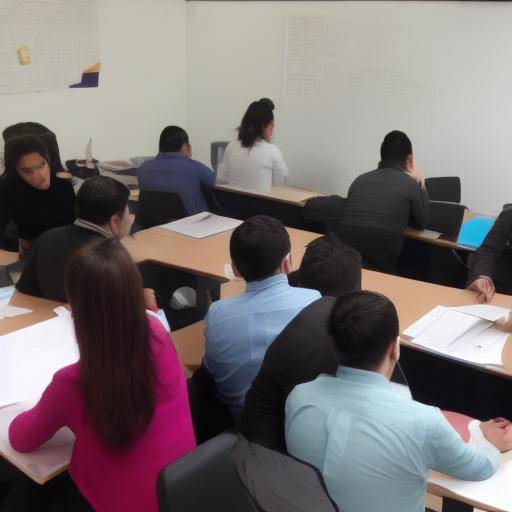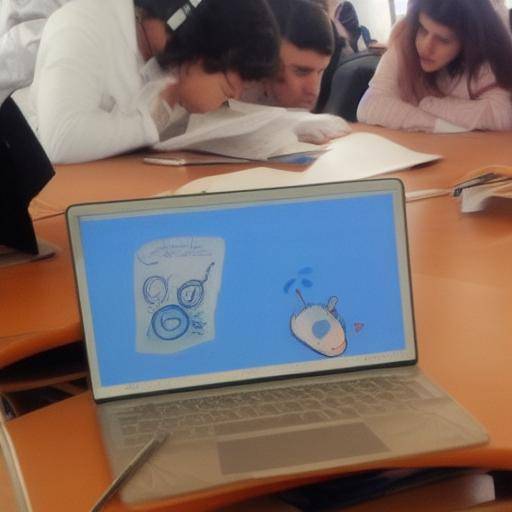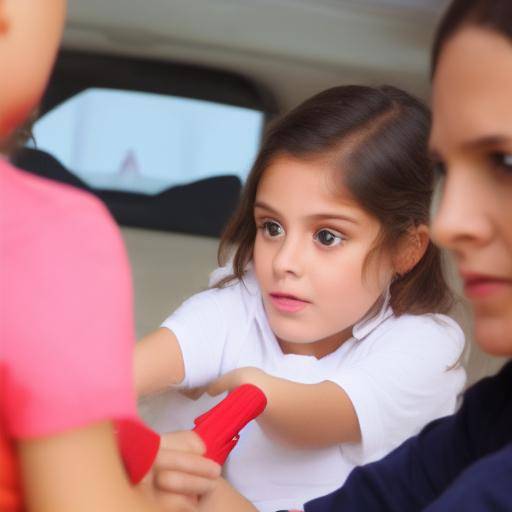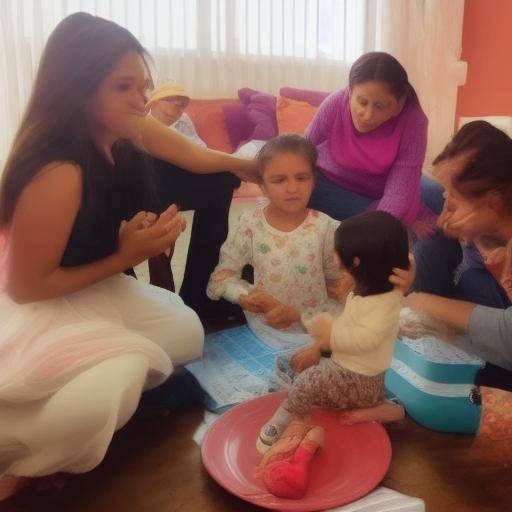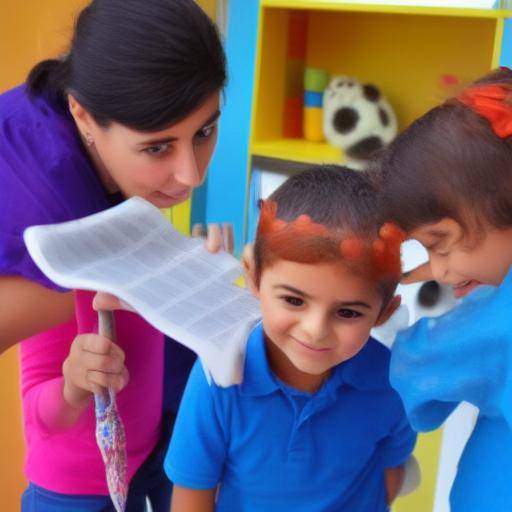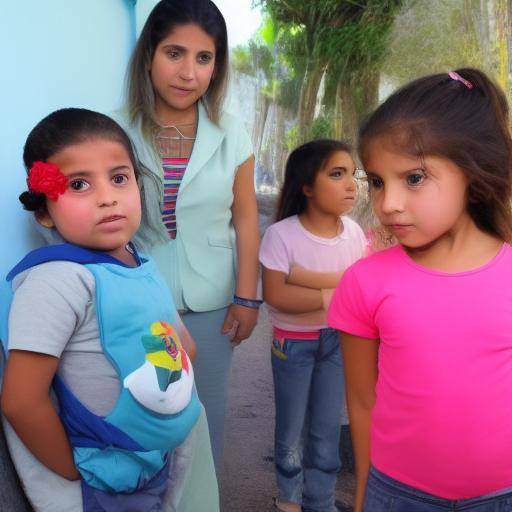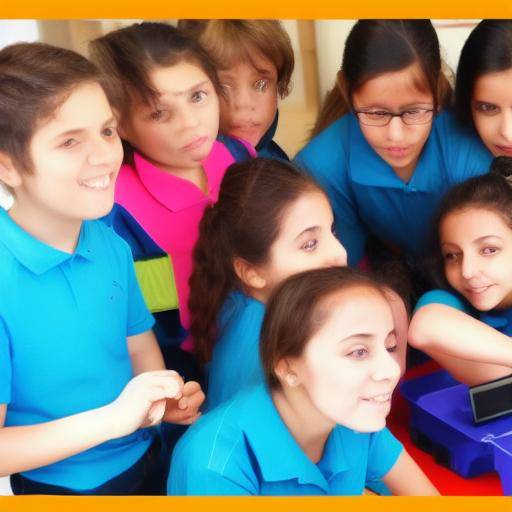
Promoting collaborative leadership in the classroom is a key strategy for the integral development of students. Promoting teamwork, effective communication and shared decision-making contributes significantly to the learning and development of social skills. In this article, we will explore in depth the concept of collaborative leadership, its importance in the educational environment and offer practical advice to promote it in the classroom.
Introduction
Collaborative leadership has become an essential skill in the educational and labor environment. In an interconnected world, where collaboration and the ability to work as a team are highly valued, it is crucial that students develop these skills from an early age. Promoting collaborative leadership in the classroom not only promotes a participatory learning environment, but also prepares students to face the challenges of the real world.
In this article, we will explore the foundations of collaborative leadership, its importance in the educational context, and provide concrete strategies for its implementation. Through concrete examples and practical advice, we intend to offer educators, parents and students the tools necessary to cultivate a collaborative and enriching learning environment.
History and Background
The concept of collaborative leadership dates back to the theories of social psychology and sociology, where the importance of teamwork and the mutual influence on the achievement of collective goals was recognized. In the field of education, the notion of collaborative leadership has evolved over time, moving from a purely hierarchical approach to a more participatory and horizontal model.
Over the past decades, there has been a significant change in the way classroom leadership is conceived. It has shifted from a teacher-centred approach to a model that values the active participation of students in decision-making and problem solving.
Analysis in Deep
Benefits of Collaborative Leadership in the Classroom
Promoting collaborative leadership in the classroom brings a number of benefits for both students and teachers. These include:
- Social skills development: Teamwork promotes cooperation, empathy and mutual respect.
- Improved academic performance: Collaboration in problem and project resolution leads to better academic results.
- Promoting autonomy: Students develop the ability to make decisions autonomously and assume responsibilities.
- Preparation for the world of work: Collaborative leadership prepares students to face the challenges of the labour market, where teamwork is fundamental.
Challenges in the Implementation of the Collaborative Leadership
Despite the many benefits, the implementation of collaborative leadership in the classroom also presents challenges. Among the most common challenges are:
- Change resistance: Both teachers and students can show resistance to adopting a more participatory approach in the educational process.
- Equitable distribution of responsibilities: Ensuring that all team members participate equally and assume proportional responsibilities can be complicated.
- Conflict Management: Teamwork can involve interpersonal conflicts that need to be effectively addressed.
Comprehensive review
Strategies for Promoting Collaborative Leadership in the Classroom
- Promote active participation: Promoting an environment in which all students feel heard and valued is essential for the development of collaborative leadership.
- Assign roles and responsibilities: Establishing roles within the working teams allows each student to assume specific responsibilities, fostering autonomy and cooperation.
- Inclusion of team troubleshooting: Planning challenges that require the joint participation of students promotes critical thinking and collaboration.
Comparative analysis
Promoting collaborative leadership in the classroom is closely related to promoting an enabling environment for developing student leadership skills. While traditional leadership focuses on the figure of the leader as an individual with authority and control, collaborative leadership seeks to distribute decision-making and enhance the leadership skills of all team members.
Collaborative leadership shares similarities with situational leadership, as it adapts to circumstances and promotes the active participation of all team members based on their skills and knowledge.
Practical Tips and Accessible Strategies
- Promoting effective communication: Promote the expression of ideas, constructive debate and active listening among team members.
- Recognize and value diversity: Increase the participation of students with different skills, experiences and perspectives in the work teams.
- Establish clear goals: Define concrete and measurable objectives for each project or team activity, promoting commitment and shared responsibility.
Industry Perspectives and Expert Reviews
According to Dr. Juan Carlos Rodríguez, a collaborative pedagogy expert, "The promotion of collaborative leadership in the classroom is essential to prepare students for the challenges of an increasingly interconnected and collaborative working environment. Teachers play a crucial role in cultivating an environment that promotes active participation and the assessment of the diversity of skills and perspectives."
Cases and Applications in Real Life
A concrete example of collaborative leadership in the classroom is the interdisciplinary project "Cultivating Changes", in which students from various areas of study join in addressing social issues from complementary approaches. This project not only promotes teamwork, but also promotes the application of practical skills in solving real problems.
Future Trends and Predictions
It is hoped that in the future the focus on promoting collaborative leadership in the classroom will continue to be promoted, as its importance is recognized in the comprehensive development of students and their preparation for a constantly evolving world of work. The integration of technology tools and active learning strategies will further promote teamwork and collaboration among students.
Conclusion
Collaborative leadership in the classroom not only promotes the development of fundamental social and academic skills, but also prepares students to be active and participatory citizens in an increasingly interconnected world. By fostering a collaborative learning environment, educators contribute significantly to the overall growth of their students.
Frequently asked questions
How can I encourage the active participation of all students in collaborative projects?
- An effective strategy is to assign rotating roles so that all students have the opportunity to assume different team responsibilities.
How to manage conflict situations within a collaborative classroom team?
- It is important to foster an environment of mutual respect and to provide tools for the peaceful resolution of conflicts, such as mediation and open communication.
To what extent does the collaborative leadership in the classroom prepare students for future labor challenges?
- Collaborative leadership gives students the opportunity to develop teamwork skills, decision-making and effective communication, fundamental competencies in the working environment.
What is the role of the teacher in promoting collaborative leadership in the classroom?
- The teacher plays a crucial role in creating an enabling environment for the development of collaborative leadership, providing guidance, emotional support and facilitating spaces for the active participation of students.
How to evaluate individual performance within a collaborative team?
- Performance evaluation in collaborative teams can be based on criteria such as active participation, input of ideas and the ability to work as a team to achieve common goals.
What technological resources and tools can enhance collaborative leadership in the classroom?
- Collaborative work platforms, project management tools and multimedia resources can facilitate communication and coordination among members of a collaborative classroom team.
How to adapt collaborative leadership strategies for students with different learning styles?
- It is essential to recognize the diversity of learning styles and to adapt collaborative leadership strategies to ensure the equal participation of all students, respecting their individual needs.
With the promotion of collaborative leadership in the classroom, the door opens to a meaningful learning process, in which students not only acquire knowledge, but also develop skills that will be of great use in their personal and professional lives. By promoting a more participatory, cooperative and collective achievement approach, educators contribute to the integral development of future generations.
For more information on how to promote collaborative leadership in the classroom, do not hesitate to consult our website, where you will find additional resources, practical advice and inspirational study cases.
We hope this article has been of great use and invite you to implement strategies to promote collaborative leadership in your educational environment. The future of education begins with collaborative practices aimed at the growth and development of all those involved!




